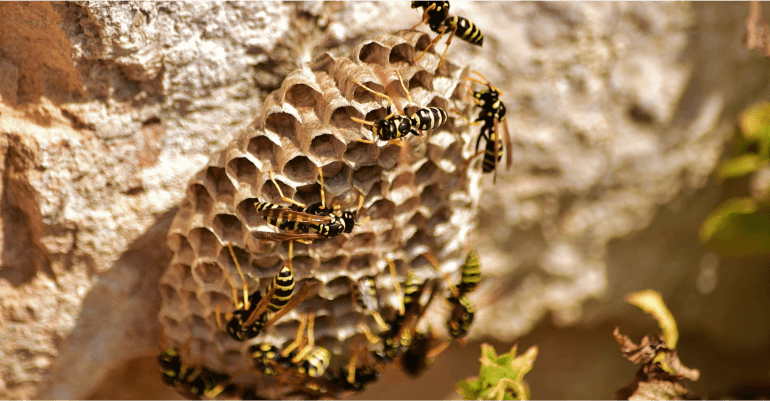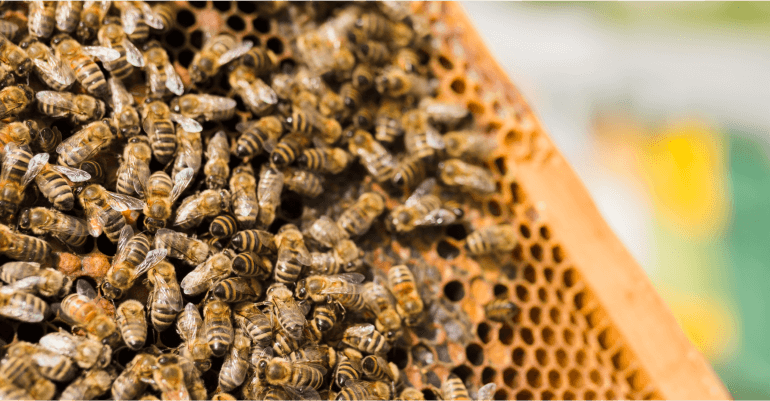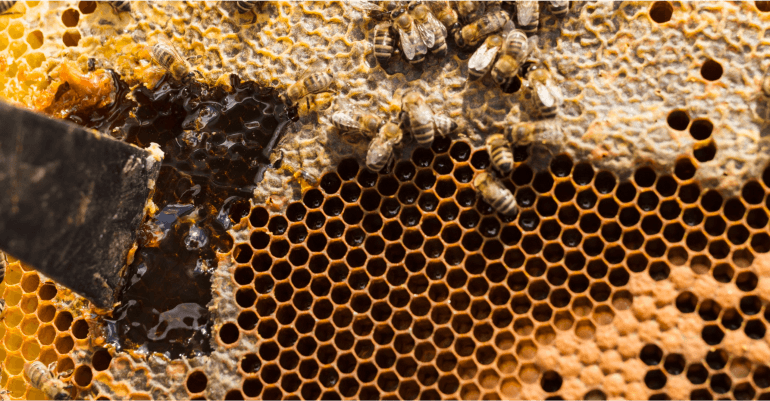How to Remove a Wasp Nest Without Killing Them
Home » Blog » How to Remove a Wasp Nest Without Killing Them
As the weather warms and the skies fill with the sounds of spring, so too do the nooks and crannies of our homes and gardens with life. Wasp nests, though often feared, are incredible natural engineering feats and home to a delicate balance of ecosystem players. Yet, when a nest appears in an undesirable location, the knee-jerk reaction is often to destroy it without consideration for the life within. Here, we explore the groundbreaking approach to wasp nest removal that allows you to coexist with these fascinating creatures, without the need for mass extermination.
The Wasp’s Role in the Ecosystem
Before we delve into the removal process, it’s crucial to understand the importance of wasps. While commonly associated with their painful stings and invasive nests, wasps play a vital role in the environment. They are pollinators, aiding in the propagation of various plant species, and act as pest controllers by preying on insects that can be harmful to crops and other plant life. Additionally, they are a food source for many bird species, contributing to the delicate balance of the food chain.
Why Traditional Methods Fall Short
Typically, wasps are seen as a nuisance and a potential danger, leading to their mass extermination through chemical wasp sprays or the sudden nighttime attack with aerosol wasp killers. However, these methods not only obviate the insects’ beneficial attributes but also pose risks to humans, pets, and the environment. Moreover, the aftermath often includes the disposal of toxic waste and dead insects, an ecological travesty in its own right.

A Safe and Practical Guide
For those with a compassionate approach to wildlife, the thought of needlessly destroying a wasp nest can be unsettling. It’s a commendable stance, and one that aligns with a growing cultural awareness of the importance of all creatures to the ecosystem. However, when wasps build their homes in places that pose a danger to humans, such as around entrances or play areas, the need for relocation becomes crucial. In this guide, we will explore safe and humane methods of wasp nest relocation without resorting to extermination.
Understanding Wasp Behavior and Nest Identification
Before you embark on the mission to relocate a wasp nest, understanding the insect’s behavior is key to a successful and safe process. Wasps are highly territorial and can become aggressive if they perceive a threat to their nest, so it is vital to approach with caution. Common species that might need relocation include paper wasps, hornets, and yellow jackets.
Identifying the Species and the Nest Location
First, make sure you’re dealing with a wasp and not a bee. Unlike bees like honey bees, wasps are aggressive and can sting repeatedly. Wasp nests can be found in a variety of places, including bushes, under eaves, or even below ground. Knowing the location of the nest will help you plan the safest approach for moving it.
Recognizing the Nest Structure
Wasp nests vary in size and structure. Paper wasps usually create an open, umbrella-shaped nest, hornets build large, enclosed nests often in trees, and yellow jackets prefer locations like wall cavities or old rodent burrows. Understanding the phenotype of the nest will help you select the proper tools for relocation.
Safety Precautions and Equipment
Ensuring your personal safety and the security of those around you should be your top priority. Wearing the right protective gear and having standby assistance is crucial to avoid stings and handle emergency situations effectively.
Wearing Protective Clothing
This includes a full-body suit, protective gloves, a veil, and sturdy, closed-toe shoes. Even the slightest exposure can lead to multiple stings, so take no chances. Additionally, make sure any helpers are also suitably dressed to minimize risks.
Assembling the Essential Tools
To safely remove a wasp nest, you’ll need a few tools, such as a specialized wasp spray (that does not kill wasps but only sedates the wasps), a bucket, and a large, clear plastic bag. Have these on hand before approaching the nest.

The Step-by-Step DIY Relocation Process
Now that you are well-prepared, it’s time to follow a systematic method to move the wasp nest safely and effectively.
Sedating the Wasps
Begin in the early morning or late evening when the wasps are less active. Safely approach the nest, and using the specialized spray, apply a generous amount to sedate the wasps. They will eventually fall to the ground.
Detaching the Nest
Once the activity around the nest has significantly reduced, carefully detach it from its location. This is where a long-handled tool or a ladder might come in handy, keeping you at a safe distance.
Transporting the Nest
Quickly but steadily lower the now-dormant nest into a bucket. If the nest is large, you might need to do this in stages—use the plastic bag to encase the nest while in the bucket for additional safety.
Securing the Transport
Secure the bucket’s lid with air holes and transport the nest to its new location, such as a less-trafficked area of your garden or a nearby wood. Time is of the essence here; relocate the nest as soon as possible to avoid the risk of the wasps regaining consciousness.
Aftercare and Observation
Once you’ve successfully moved the nest, there are a few additional steps to ensure the well-being of both the wasps and those around the new location.
Monitoring the Wasp Activity
Ensure the wasps are thriving in their new location. Frequent checks will allow you to monitor their activity without putting yourself at risk.
Preventing Future Encounters
To protect your family and others, take measures to repel wasps from nesting in undesirable areas. Close off access points, use deterrents, and consult with a natural pest control professional for long-term strategies.

Professional Assistance for Larger Nests
For larger nests or infestations in high-risk areas like inside the home or close to entryways, seeking professional help is highly advisable. Pest control services can both safely relocate the nest and put in place preventive measures to avoid future infestations in vulnerable spots.
Entrusting the delicate task of wasp nest removal to professionals is not only prudent but could also save you a great deal of trouble. Contact your trusty professional and become wasp nest-free!
Expertise and Experience
Professional pest control providers boast a wealth of experience and expertise when dealing with wasps. Attempts in removing wasp nests without the necessary knowledge can lead to aggressive responses from the colony, resulting in painful and potentially dangerous stings.
An experienced hand understands the behavior of different species and can effectively manage the specific risks associated with each. They can distinguish between more docile species, such as paper wasps, and the notoriously aggressive yellow jackets, and tailor their approach accordingly.
Safety Measures
Safety for both the humans and the wasps involved in the process are paramount for professional services. Not only do they minimize the risk of wasp stings for you, but they also extend this caution to ensure that the process does not significantly disrupt the wasps’ lives.
Many pest control companies now also focus on using organically derived, non-toxic repellents and traps to evict the insects. This kind of preventive care is not only ethical but also reflective of a broader societal trend towards more eco-friendly living.
Effective Solutions
Equipped with specialized tools like wasp suits, specialized vacuums, and, in the case of larger infestations, thermal imaging technology, professional removers have at their disposal a range of methods for extraction and relocation. Their tactics are not just well-informed but are also the most efficient in preventing the re-establishment of the wasps’ nest in treated areas.
Legal Compliance
A professional service takes the guesswork out of navigating local environmental laws and regulations. They will be aware of any protected species of wasps in your area and will take the necessary precautions to ensure that they aren’t interfering with breeding or foraging.



